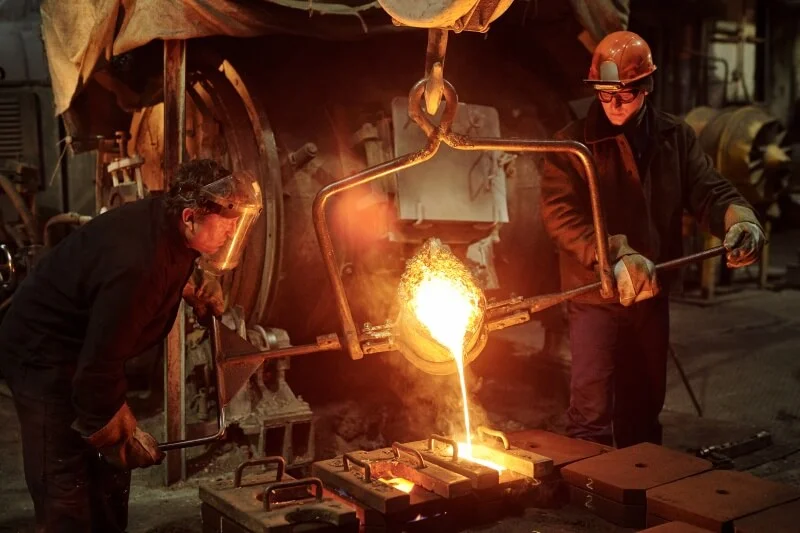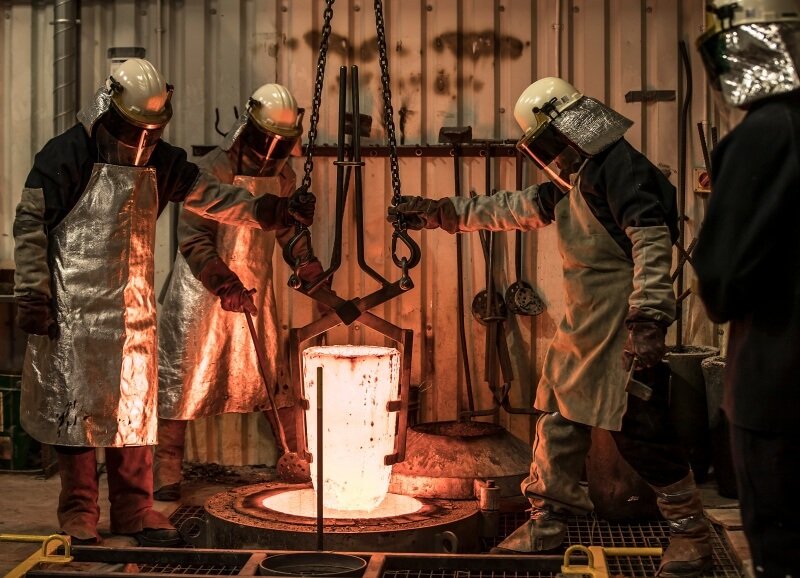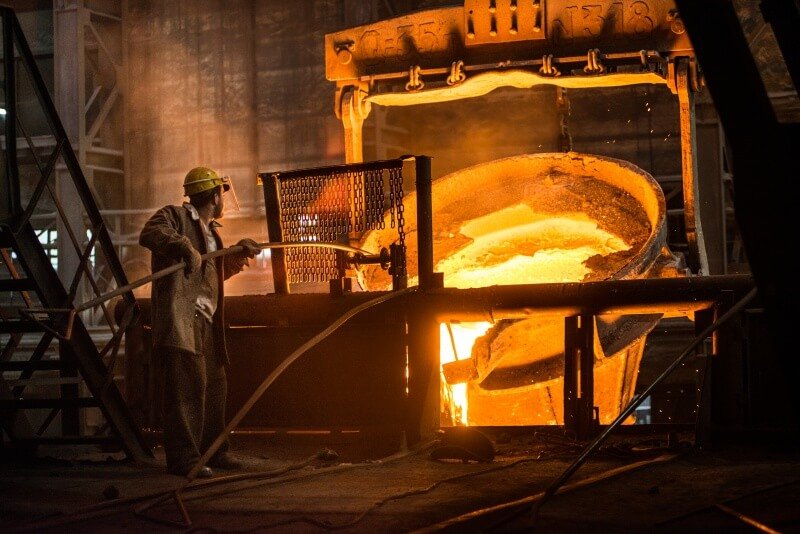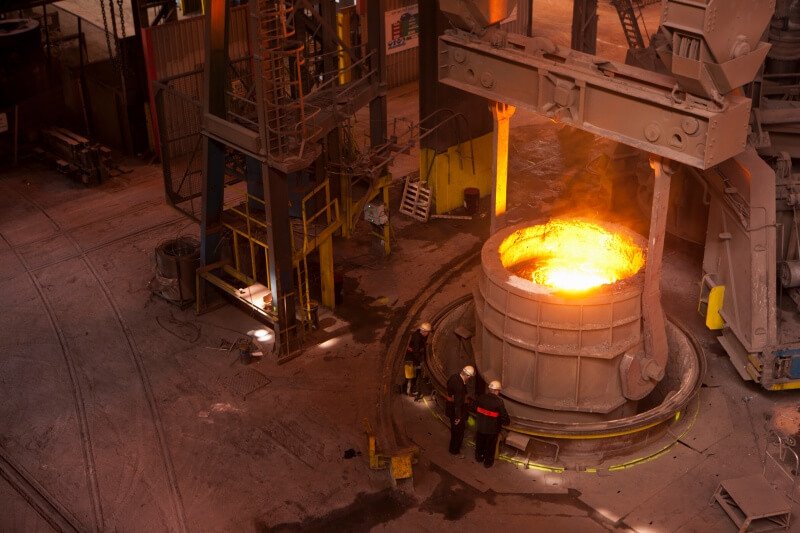Sourcing lightweight, high-strength metal parts often creates bottlenecks and budget creep. Inferior methods yield heavier components, weaker structures, and higher unit costs. Alloy die casting solves this with a rapid, precise, and economical approach to produce dimensionally accurate parts—so your project hits strict performance targets while staying on budget.
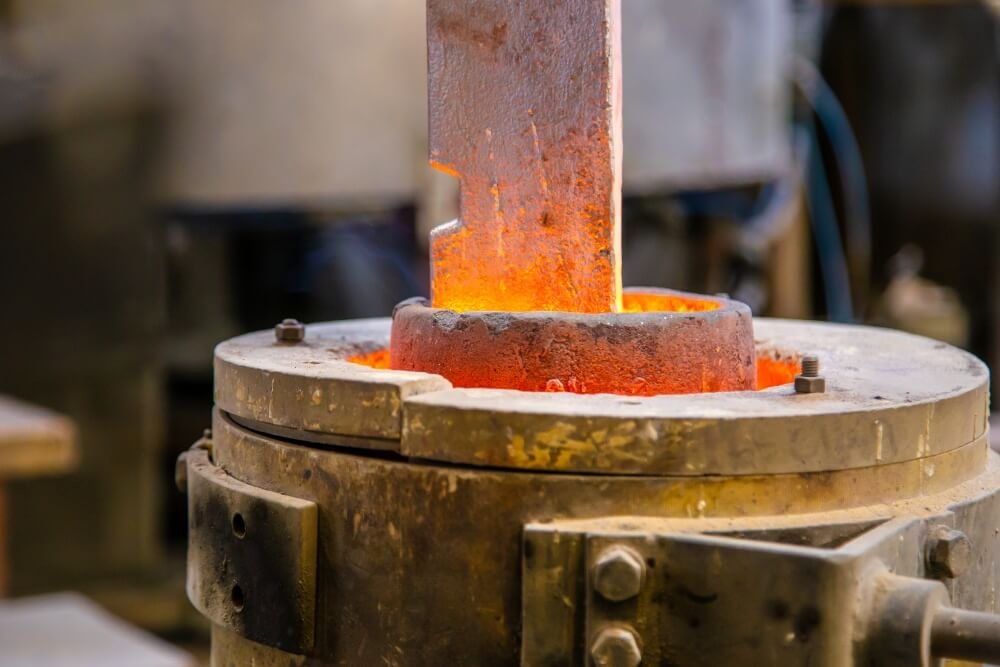
The Fundamentals of Alloy Die Casting
This manufacturing process uses high-pressure systems to force molten metal into a reusable steel mold, or die. The result is an accurately defined part with a smooth or textured surface finish. It is based on rapid production, allowing for a high volume of parts to be created quickly.
How does the steel mold function?
The die is made in at least two sections to permit the removal of castings after they solidify. These halves are clamped together tightly by a die casting press at the start of the cycle. Now, here’s the critical part: this secure locking mechanism is essential for handling the high injection pressures.
- Die halves are securely mounted.
- One section is stationary, one is movable.
How is molten metal injected?
Molten metal is injected into the die cavity, where it solidifies very quickly to form the part. For aluminum, a cold chamber machine is used where the molten metal is ladled into the injection system for each shot. What does this mean for you? This prevents damage to the machine from aluminum’s high melting temperature.
- Cold chamber machines are used for aluminum.
- Pressure requirements are typically high.
What is the casting ejection process?
Once the part solidifies, the die halves are drawn apart and the casting is ejected using pins. This cycle repeats rapidly, enabling high-volume production with minimal downtime between shots. Here’s the bottom line: this efficiency is what makes the process so cost-effective for large orders.
- Die halves are separated.
- Casting is pushed out by ejector pins.
Key Takeaway: Understanding the core mechanics—clamping, injection, and ejection—reveals why alloy die casting delivers consistent, high-quality parts at speed.
| Stage | Action | Purpose |
|---|---|---|
| Clamping | Die halves are pressed together. | To seal the mold for injection. |
| Injection | Molten metal is forced into the die. | To form the part’s shape. |
| Ejection | Solidified part is removed. | To complete the cycle. |
This systematic process ensures each part is a precise replica.
Key Benefits of Alloy Die Casting
Aluminum die casting creates lightweight parts without sacrificing strength, making it a popular choice for many industries. These parts also offer more surface finishing options and can withstand higher operating temperatures than other non-ferrous materials. The process is cost-effective, especially for high-volume production runs.
Why are parts so lightweight yet durable?
Aluminum alloys inherently possess a fantastic strength-to-weight ratio, which is retained through the die casting process. This allows you to design strong, durable components that reduce the overall weight of your final product. Think about it: this is a major advantage in automotive and aerospace applications.
- Excellent strength-to-weight ratio.
- Creates durable, lightweight parts.
How does it improve corrosion resistance?
Aluminum naturally forms a protective oxide layer, which gives it great resistance to corrosion. This property makes aluminum die-cast parts suitable for use in harsh environments or applications exposed to the elements. Here’s the deal: you get long-lasting components with less need for protective coatings.
- Natural resistance to rust and decay.
- Ideal for outdoor or demanding use.
What is the strength-to-weight ratio?
This ratio is a measure of a material’s strength compared to its mass, and aluminum excels here. It allows for the creation of parts that are as strong as steel but significantly lighter. What’s the real story? This enables better fuel efficiency in vehicles and easier handling of portable devices.
- High strength relative to its low density.
- Reduces overall product weight.
Key Takeaway: The combination of lightweight durability and corrosion resistance makes alloy die casting a superior choice for performance-critical applications.
| Benefit | Description | Impact |
|---|---|---|
| Lightweight | Low-density aluminum alloy. | Reduced product weight, improved efficiency. |
| Durable | High strength-to-weight ratio. | Strong parts that withstand stress. |
| Corrosion Resistant | Natural protective oxide layer. | Longer part lifespan in harsh conditions. |
These core benefits directly translate to higher-performing and more reliable end products.
Material Traits of Alloy Die Casting
Alloys used in die casting, particularly aluminum, have high dimensional stability for complex geometries and thin walls. They possess high thermal and electrical conductivity, making them suitable for a wide range of applications. This versatility is a key reason for their widespread adoption in manufacturing.
How conductive are the finished parts?
Aluminum is an excellent electrical conductor, making it ideal for electronic housings and connectors. This property helps with electrical performance and EMI shielding, even in high-temperature environments. The bottom line is: you can rely on these parts for sensitive electronic applications.
- Excellent electrical conductivity.
- Good EMI shielding properties.
Can parts withstand high temperatures?
Aluminum die-cast parts retain durable strength at very high operating temperatures, outperforming many other non-ferrous materials. This requires the use of cold chamber die casting machines to handle the high melting point of aluminum. What does this mean for you? Your components will maintain their integrity even under thermal stress.
- Maintains strength at high temperatures.
- Superior to many other alloys.
What surface finishing options are there?
Parts produced through this method have a smooth, defined surface that is ready for a variety of finishing options. This includes painting, powder coating, and anodizing to enhance appearance or add further protection. Think about it: this reduces post-processing needs and saves you money.
- Painting and powder coating.
- Anodizing and plating.
Key Takeaway: The inherent properties of aluminum alloys—conductivity, thermal resistance, and finishability—make them exceptionally versatile for diverse product needs.
| Property | Advantage | Common Application |
|---|---|---|
| Electrical Conductivity | Excellent performance and shielding. | Electronic Housings |
| Thermal Resistance | Withstands high temperatures. | Engine Components |
| Surface Finish | Smooth and ready for coating. | Consumer Products |
These material traits provide engineers with significant design freedom.
The Efficiency of Alloy Die Casting
The process is defined by its rapid production cycle, which allows a high volume of parts to be manufactured quickly. Steel dies are reusable for tens of thousands of castings, making the per-unit cost decrease significantly with volume. This efficiency makes it a go-to choice for mass production.
How does rapid production lower costs?
A single die can produce parts in rapid succession with very short cycle times, often just seconds. This high-speed output minimizes labor costs and maximizes machine uptime. Here’s the deal: faster production means a lower cost per part for your project.
- Short cycle times per part.
- Reduced labor and operational costs.
Is it cost-effective for high volumes?
Yes, the initial investment in tooling is offset by the low cost per part in high-volume runs. As production quantity increases, the cost of the die is distributed across thousands of units. What’s the real story? This makes it far more economical than processes like CNC machining for large orders.
- Tooling costs are amortized.
- Per-unit price drops with quantity.
Key Takeaway: For high-volume projects, the unparalleled speed and scalability of alloy die casting deliver significant cost savings.
| Factor | Impact on Cost | Best For |
|---|---|---|
| Production Speed | Reduces labor and overhead. | High-volume runs. |
| Tooling Life | Spreads die cost over many parts. | Mass production. |
This economic model makes it a superior choice for scaling production.
The History of Alloy Die Casting
The history of die casting began in the early 1800s, originally serving the printing industry to create movable type. Its evolution was driven by the demand for mass-produced, complex parts in the growing industrial sector. Today, it is a cornerstone of modern manufacturing.
Where did the technology originate?
The first die casting equipment was invented for the printing industry to produce lead-alloy type characters. In 1849, Sturges patented a small, hand-operated machine designed for this purpose. Think about it: this innovation laid the groundwork for today’s high-pressure manufacturing.
- Started in the printing industry.
- First patent was issued in 1849.
How has the process evolved over time?
The process evolved from low-pressure injection of tin and lead to high-pressure casting of aluminum and zinc. This shift was driven by the need for higher quality parts with better mechanical properties and finishes. What does this mean for you? Modern die casting is faster, more precise, and more versatile than ever before.
- Shift from low-pressure to high-pressure.
- Moved from tin/lead to aluminum/zinc.
Key Takeaway: From simple printing type to complex industrial components, the evolution of alloy die casting has always been about improving precision, quality, and efficiency.
| Era | Key Development | Materials Used |
|---|---|---|
| 1800s | Hand-operated machines for printing. | Tin and Lead |
| 1900s | High-pressure injection methods. | Aluminum and Zinc |
This historical progression highlights a continuous drive toward producing better parts faster.
Market Trends for Alloy Die Casting
The global market for aluminum castings is expanding, driven by demand in the transportation, construction, and electronics sectors. The Asia Pacific region, led by China, currently accounts for the largest market share. This growth is projected to continue as industries seek lightweight, durable components.
Which global markets are growing fastest?
The Asia Pacific region is expected to see the highest growth, with a projected compound annual growth rate (CAGR) of 5.3%. Europe and North America are also strong markets, with expected CAGRs of 5.1% and 4.9% respectively. The bottom line is: demand is increasing globally for high-quality die-cast parts.
- Asia Pacific leads growth.
- Europe and North America follow closely.
Why is the transportation sector key?
Transportation is the largest end-use segment for alloy die casting. Strict emissions laws and consumer demand for fuel-efficient vehicles are driving the replacement of heavy steel and iron parts with lightweight aluminum. Here’s the deal: aluminum casting is essential for building modern, efficient vehicles.
- Reduces vehicle weight for fuel economy.
- Helps meet government emission standards.
Key Takeaway: The global demand for alloy die casting is surging, especially in the automotive industry, where lightweighting is a top priority.
| Region | Projected CAGR (2017-2025) | Key Driver |
|---|---|---|
| Asia Pacific | 5.3% | Manufacturing and Construction |
| Europe | 5.1% | Automotive Industry |
| North America | 4.9% | Automotive and Aerospace |
These trends indicate a robust future for the alloy die casting market.
Automotive Uses for Alloy Die Casting
In the automotive industry, alloy die casting is critical for producing components that improve fuel efficiency and performance. By replacing heavier materials, manufacturers can build lighter and more economical vehicles. This trend is central to modern automotive design and engineering.
How does it improve fuel efficiency?
It allows for the creation of lightweight aluminum parts that replace heavier steel and iron components. This weight reduction directly translates to better fuel economy, a key selling point for consumers. What’s the real story? Every pound saved helps a vehicle go farther on the same amount of fuel.
- Reduces overall vehicle weight.
- Less weight means less energy to move.
What components are typically made?
A wide variety of automotive parts are made using this process, including engine blocks, transmission housings, and structural components. These parts require complex geometries and high strength, which die casting delivers perfectly. Think about it: many of the critical parts in your car are likely die-cast.
- Engine and transmission parts.
- Housings and structural frames.
Key Takeaway: Alloy die casting is an indispensable technology for the automotive industry, enabling the production of lightweight, high-performance vehicles.
| Component Type | Example | Benefit of Die Casting |
|---|---|---|
| Powertrain | Transmission Housing | Lightweight, complex geometry |
| Structural | Cross-car Beams | High strength-to-weight ratio |
The application of die casting is fundamental to achieving modern automotive performance standards.
Aerospace Use of Alloy Die Casting
The aerospace industry relies on alloy die casting to produce dense, high-quality air-frame components at a lower cost. As aircraft continue to grow in size, the need for lightweight yet strong parts becomes paramount. Die casting meets this need with precision and reliability.
Why is it used for air-frame parts?
Aerospace components demand a combination of high strength, low weight, and complex shapes, which die casting provides. The process creates parts with excellent structural integrity suitable for critical applications. Here’s the bottom line: safety and performance in aerospace depend on high-quality manufacturing.
- High strength for structural integrity.
- Lightweight for fuel efficiency.
How does it help lower production costs?
While maintaining stringent quality standards, alloy die casting offers a more cost-effective production method for certain aerospace components compared to extensive machining. The rapid cycle times and net-shape capabilities reduce both material waste and labor hours. What does this mean for you? You can source aerospace-grade parts more economically.
- Reduces material waste.
- Minimizes post-processing and labor.
Key Takeaway: In aerospace, alloy die casting provides a cost-effective pathway to producing lightweight, high-strength components essential for modern aircraft.
| Factor | Aerospace Application | Advantage |
|---|---|---|
| Weight | Air-frame components | Improved fuel efficiency and payload. |
| Cost | High-volume brackets/fittings | Lower production cost vs. machining. |
This balance of performance and cost makes die casting a valuable process in aerospace manufacturing.
Alloy Die Casting vs. Sand Casting
Sand casting is an older method where molten metal is poured into a disposable sand mold without high pressure. While versatile, it typically produces parts with rougher surfaces and less dimensional accuracy than die casting. The choice between them depends on quantity, complexity, and budget.
Which method offers better precision?
Alloy die casting offers far superior dimensional accuracy and precision due to the use of reusable steel dies. Sand casting molds are less stable, which can result in greater variability between parts. The bottom line is: for parts requiring tight tolerances, die casting is the clear winner.
- Die casting: High precision, tight tolerances.
- Sand casting: Lower precision, more variability.
When is sand casting a better choice?
Sand casting is better for very large parts or low-quantity production runs where the cost of a steel die is not justifiable. It is also easier to make design changes with sand molds. Here’s the deal: choose sand casting for prototypes or small batches.
- Low-volume production.
- Extremely large components.
How do surface finishes compare?
Die casting produces a smooth, near-net-shape surface finish that often requires no additional machining. Sand-cast parts have a rough, grainy texture and almost always need secondary operations to smooth the surfaces. What’s the real story? Die casting saves you time and money on finishing.
- Die casting: Smooth finish.
- Sand casting: Rough finish.
Key Takeaway: Choose alloy die casting for precision and smooth finishes in high volumes, but consider sand casting for prototypes and very large parts.
| Feature | Alloy Die Casting | Sand Casting |
|---|---|---|
| Precision | High | Low |
| Surface Finish | Smooth | Rough |
| Best For | High-volume, complex parts | Low-volume, large parts |
The two processes serve different manufacturing needs and are not interchangeable.
Alloy Die Casting vs. Investment Casting
Investment casting, also known as lost-wax casting, is a precision process that can create highly complex shapes. It involves creating a wax pattern, coating it in ceramic, and then melting the wax out to create a mold. It is excellent for intricate designs but is generally slower and more expensive than die casting.
Which is better for complex shapes?
Investment casting gives engineers extraordinary freedom to design intricate features and complex shapes. The liquid ceramic slurry can form molds of almost any geometry. Here’s the bottom line: for the most complex designs where die casting is limited, investment casting excels.
- Handles extremely intricate geometries.
- Fewer design constraints.
Can investment casting offer zero draft?
Yes, investment casting can produce parts with zero draft angles, which is something die casting cannot offer. Draft angles are necessary in die casting to allow for the part’s ejection from the steel mold. Think about it: this is a key advantage for certain specialized part designs.
- Zero draft angles are possible.
- Not possible in die casting.
How do part prices compare for volume?
Part prices for investment casting are much higher than for die casting, especially for larger quantities. The process is more labor-intensive and slower, making it better suited for lower-volume production. What’s the real story? For high-volume needs, die casting is significantly more cost-effective.
- Investment casting: Higher part price, for low volumes.
- Die casting: Lower part price, for high volumes.
Key Takeaway: Use investment casting for ultimate design complexity and zero-draft parts in low volumes, but select alloy die casting for cost-effective, high-volume production.
| Feature | Alloy Die Casting | Investment Casting |
|---|---|---|
| Complexity | High | Very High (Intricate) |
| Draft Angle | Required | Zero Draft Possible |
| Cost | Low (High Volume) | High (Low Volume) |
This comparison highlights the trade-offs between cost, complexity, and production volume.
Alloy die casting solves the challenge of producing lightweight, strong, and complex parts with speed and precision. Ready to leverage its power for your next project? Contact our engineering team today for a comprehensive quote and consultation, and let us help you build better products, faster.
Frequently Asked Questions (FAQ)
- Can I use alloy die casting for a small production run? No, because the high upfront cost of the steel die makes it uneconomical for small batches; it is best suited for high-volume production where the tooling cost can be amortized.
- What’s the best alloy for die casting lightweight parts? The best method is using aluminum alloys, because they are lightweight, strong, corrosion-resistant, and have excellent thermal and electrical conductivity, all while being cost-effective.
- How do I know if die casting is better than sand casting? Die casting is better if you need high precision, a smooth surface finish, and high-volume production. Sand casting is better for very large parts or low-quantity prototypes where tooling cost is a concern.
- Can I create very complex parts with die casting? Yes, because die casting is excellent for parts with complex geometries. However, for the most intricate designs with features like zero draft angles, investment casting may be a better choice.
- Which industries use alloy die casting the most? The automotive industry relies most heavily on it for lightweighting, but it is also critical in electronics for housings, aerospace for structural components, and a wide range of consumer goods.

